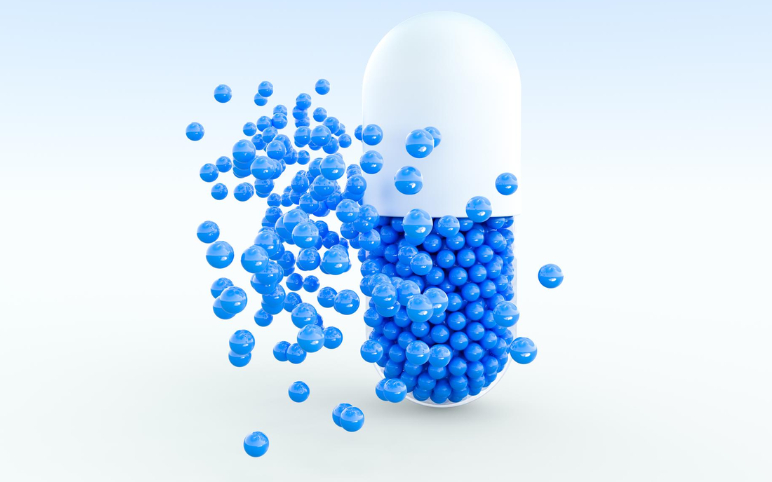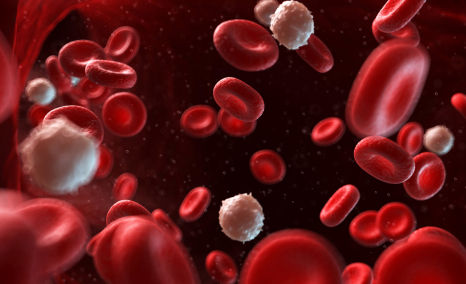After 2010, several top-selling drugs have started losing patents which is much higher than in the previous decades, the phenomenon is commonly referred to as the “patent cliff.” Since, 2011, the overall generic drugs market size has grown significantly with sales touches to new heights with each passing year. As per the FDA, (2015), “Generics account for more than 80% of prescription drugs in the US, and that number continues to grow”. It is observed that with the entry of the generics the sales of the patented drugs reduced by 90% in terms of sales.In 2021, some of the majro drugs such as AstraZeneca’s Faslodex, Amerigen Pharma’s Bystolic (Nebivolol), Cipla’s Emtriva (Emtricitabine), Alvogen’s Hysingla ER (Hydrocodone er), Teva’s Perforomist (Formoterol), Mylan’s Sutent (Sunitinib), Lannett’s Zomig ns (Zolmitriptan), have faced patents expiration, opening doors for the entry of generics as well as biosimilars. Similarly, several major drugs are expected to lose patents in 2022 in the EU and US healthcare markets, thereby making the availability of generic in the market.
Some of the Blockbuster Drugs Losing Patent Protection or Exclusivity in 2022 include –
Revlimid
Company: Bristol Myers Squibb
Disease: Multiple Myeloma
Revlimid (lenalidomide), manufactured by Celgene, is an oral cancer drug used to treat Multiple Myeloma. Revlimid is also used to treat a variety of indications in addition to Multiple Myeloma such as Myelodysplastic Syndrome and Mantle Cell Lymphoma. It belongs to a class of medications known as immunomodulatory drugs (IMiDs), which fight against cancer cells in part by assisting the immune system’s function.
Revlimid is an IMiD that is chemically related to Thalomid (thalidomide, Celgene), but it has been discovered to be more powerful in the laboratory and has different adverse effects. Revlimid’s side effects, such as significant sleepiness, constipation, and severe nerve issues (neuropathy), are significantly less common than Thalomid’s. On February 22, 2017, Lenalidomide (Revlimid) was approved by the FDA as maintenance therapy for patients with Multiple Myeloma who have received an autologous stem cell transplant.
BMS, which bought Celgene for USD 74 billion in 2019 benefited greatly from the price and patenting approach. Revlimid made USD 12.1 billion in pharmaceutical sales in 2020. It made USD 12.8 billion in sales last year. However, Revlimid’s days are limited as generic copies of the drug approach the important US market following years of patent battle and settlements. Sandoz and Stada Arzneimittel announced in February that their generic versions of Revlimid are now available in Europe. Revlimid generics are expected to arrive in the United States this month. Moreover, several other pharmaceutical companies including Natco Pharma, Alvogen, Sun Pharma, Zydus Cadila, Cipla, Dr. Reddy’s Laboratories, Apotex, and others are also in the race of developing Revlimid generic.
Lucentis
Company: Roche
Disease: Wet Age-related Macular Degeneration
Lucentis (ranibizumab) is a humanized anti-VEGF antibody fragment that is used for the treatment of Wet Age-related Macular Degeneration, Macular Edema following Retinal Vein Occlusion, Diabetic Macular Edema, Diabetic Retinopathy, and Myopic Choroidal Neovascularization. Lucentis is developed by Genentech, a subsidiary of Roche. The company retains commercial rights in the United States, while Novartis has exclusive commercial rights in the rest of the world. Lucentis 0.5 mg (0.05 mL of 10 mg/mL solution) is administered intravitreally once a month for patients with Wet Age-related Macular Degeneration.
In June 2006, the FDA first approved Lucentis for the treatment of Wet Age-related Macular Degeneration. Lucentis is available in more than 110 countries. The Lucentis patent was expire in the US in 2020 whereas in Europe the patent will expire in 2022. As many blockbuster drugs face competition from lower-cost knockoffs, their sales peak just before exclusivity expires. However, this has not been the case for Roche and Novartis’ Lucentis. Lucentis generated USD 1.35 billion in revenue for Roche’s subsidiary Genentech in 2021. However, those figures are likely to fall this year as Samsung Bioepis of South Korea prepares to launch Byooviz, the first biosimilar approved for Lucentis. The FDA approved Byooviz in September of last year, following Europe and the United Kingdom, and its commercialization will take place in June of this year, according to a global licensing agreement between Samsung and Genentech. Biogen is collaborating on biosimilar and will market Byooviz in the United States, Europe, Canada, Australia, and Japan.
Moreover, several other pharma companies from all over the world such as Chong Kun Dang, Xbrane Biopharma, Coherus BioSciences, Bioeq, Lupin, and others are also developing Lucentis biosimilar. Furthermore, some of the pharma industry’s biggest names, including Pfizer, Sandoz, Celltrion, and Biocon, were thought to be interested in developing a Lucentis biosimilar but have yet to reveal any plans for a program.
Vimpat
Company: UCB
Disease: Partial Onset Seizures
Vimpat (lacosamide) manufactured by UCB is an anticonvulsant and anti-epileptic drug. Vimpat is used to treat partial-onset seizures in adults and children over the age of one month. It is also used to treat primary generalized tonic-clonic seizures in patients over the age of 4. Vimpat is an anticonvulsant that is taken orally. It selectively increases sodium channel slow inactivation and interacts with the neuroplasticity-relevant target collapsing-response mediator protein-2 (CRMP-2).
Vimpat was first approved by the FDA in July 2008 as adjunctive therapy for partial-onset seizures in adults. However, the anti-epileptic drug Vimpat will face generic competition. Vimpat has protection on a key U.S. patent until March of this year, thanks to a 2018 decision by the Court of Appeals for the Federal Circuit. UCB predicted that the drug would generate 1.5 billion euros in peak sales in 2021, capping off its last full year of exclusivity with a bang. The company delivered on that projection. Last year, Vimpat’s global sales totaled 1.55 billion euros (USD 1.74 billion), with 1.13 billion euros (USD 1.27 billion) coming from the United States. But UCB believes that the launch of Bimzelx, along with a trio of growth products—Briviact, Nayzilam, and Evenity—will more than offset the impact of the (loss of exclusivity) for Vimpat next year and Cimzia in 2024.
Furthermore, in terms of potential competitors, India’s Aurobindo Pharma has received preliminary approval for its Vimpat generic in 2015. Moreover, according to FDA records, Zydus Cadila also received a tentative green light for its lacosamide tablets in 2019.
Alimta
Company: Eli Lilly
Disease: Malignant Pleural Mesothelioma & Non Squamous NSCLC
Pemetrexed is a chemotherapy drug sold under the brand name Alimta by Eli Lilly and Company. It is indicated for use in combination with cisplatin in the treatment of patients with Malignant Pleural Mesothelioma who are either unresectable or are not candidates for curative surgery. It is also indicated for use in patients with non-squamous Non-small Cell Lung Cancer (NSCLC), either in combination with pembrolizumab and platinum-based chemotherapy as initial treatment in metastatic disease where no EGFR or ALK genomic tumor aberrations exist, in combination with cisplatin as initial treatment for locally advanced or metastatic disease, or as maintenance treatment for locally advanced or metastatic disease that has not progressed after four cycles of chemotherapy.
Alimta was first approved for the Malignant Pleural Mesothelioma treatment by the FDA in February 2004 and later on, in July 2009, the FDA also approved Alimta as maintenance therapy for nonsquamous NSCLC treatment. Alimta’s “vitamin regimen patent” expires in May, potentially opening the door for generic competitors Viatris and Apotex. In addition, Eagle Pharmaceuticals was the first to produce a knockoff in February. Eagle announced a limited generic launch in February and the rights to an “uncapped” market entry on April 1. Other generic drugmakers, on the other hand, will have to wait until May, when the last of Alimta’s patents expire in the United States.
Velcade
Company: Takeda
Disease: Multiple Myeloma & Mantle Cell Lymphoma
Bortezomib, sold under the brand name Velcade, is a targeted therapy co-developed by Millennium/Takeda and Janssen Pharmaceutical, to treat adults with multiple myeloma (a type of blood cancer). Additionally, it is prescribed to treat adults with mantle cell lymphoma (a cancer of the lymph nodes). In the US, the Millennium is holding the rights for the commercialization of the drug, while Janssen is responsible for commercialization in Europe and the rest of the world. In Japan, it is co-promoted by both Takeda Pharmaceutical Company Limited and Janssen Pharmaceutical. Over the years, Velcade is one of the high revenue-generating drugs for Takeda.
The drug was approved first on May 13, 2003. Along with the US, it is currently approved in 53 countries for the treatment of mantle cell lymphoma (MCL) in patients who have received at least one prior treatment. Additionally, it is approved in more than 90 countries for the treatment of patients with multiple myeloma (MM). The patent for Velcade is expected to expire this year.
Velcade generated significant revenue from the US healthcare market. In 2021, Velcade yielded about $920 million in the U.S. In the last quarter of 2021, Velcade dragged in nearly 24.1 billion yen ($210 million) from the US market.
Several pharma giants over the years were looking to make Velcade generic and have stimulated lawsuits from Takeda. In 2015, a U.S. judge in Delaware termed the patent as invalid, citing the compound it covers was “the inherent result of an obvious process.” In 2017, Takeda won an appeals court that had termed the patent valid and extended the Velcade patent protections till 2022.
Pharma companies are actively looking forward to tentative approvals for the Velcade generic. Currently, pharma and biotech companies such as Teva, Mylan, and Sandoz (Novartis AG), Sun Pharmaceutical Industries Ltd, Glenmark Pharmaceuticals Ltd, and Wockhardt Ltd, are in the process to get approval for Velcade generic.
Combigan
Company: Allergan
Disease: Glaucoma or Ocular Hypertension
Combigan is developed and marketed by Allergan. It received FDA approval on 30th October 2007 and is included in one NDA. There are ten patents protecting Combigan. The generic ingredient in COMBIGAN is brimonidine tartrate and timolol maleate.
The therapy was developed to reduce elevated intraocular pressure in patients with glaucoma or ocular hypertension who require adjunctive or replacement therapy due to inadequately controlled IOP. In 2017, Combigan represented 3 percent of Allergan’s total revenue, making it one of Allergan’s best-selling drugs. In 2019, the ALPHAGAN/COMBIGAN net revenues in the fourth quarter of 2019 were $94.5 million. The high revenue has motivated the other player to enter the generic market of Combigan.
In December 2017, Allergan announced that it failed to save the patent appeal from Novartis’ Sandoz division for Combigan generic. In January 2022, Apotex Corp. launched the first-to-market authorized generic version of Combigan® Ophthalmic Solution in the United States.
Company: Merck
Disease : Type 2 Diabetes
Sitagliptin, sold under the brand name Januvia, is an antihyperglycaemic drug containing an orally active inhibitor of the dipeptidyl peptidase-IV (DPP-IV) enzyme. It is an anti-diabetic medication to treat type 2 diabetes mellitus. Januvia is not recommended for use in patients with type 1 diabetes. Januvia is developed by Merck Sharp & Dohme (MSD), a UK subsidiary of Merck & Co. JANUMET is another drug by Merck consisting of sitagliptin and metformin HCl tablets used for the treatment of type 2 diabetes mellitus in adults.
Januvia received FDA approval in October 2006, while Janumet received approval in 2007. The Januvia patent related to the basic compound is set to expire in July 2022. While the patents related to the salt or product (the monophosphate version that is marketed) will expire in 2026 in the US.
Since the launch of Januvia in 2006, it is one of the most successful products for Merck in terms of revenue. As per Merck, in 2021, the combined sales of JANUVIA (sitagliptin) and JANUMET (sitagliptin and metformin HCI) grew by 5% to $1.4 billion. The major factor for high revenue is favorable rebate adjustment and the growth in demand in certain international markets.
In the United States, the average retail price for Januvia (sitagliptin) for 30-day is around $500, which is unaffordable and out of reach for many patients. However, some similar versions of the Januvia are available in the market but not the generic one. In 2013, the Indian drugmaker Sun Pharma received tentative approval from the FDA for a generic version of Januvia. The launch of the generic version is expected in 2022.
Bevacizumab (Avastin)
Company: Roche
Disease: Cancer
Avastin is Roche’s blockbuster cancer and inflammatory diseases drug. Avastin is an oncology drug to treat adults with cancer such as colon (large intestine) or rectum, metastatic breast cancer, advanced non-small-cell lung cancer, advanced or metastatic kidney cancer, cancer of the cervix (the neck of the womb), epithelial cancer of the ovary, in combination with other cancer medicines.
Avastin in combination with Tecentriq generated nearly CHF 3.1 billion in revenue in 2021, which is nearly 37% less than the previous year. The major factor for the decrease in revenue is due to the high uptake of biosimilars, mainly in the United States and Europe. In Europe, the revenue from sales was around CHF 430 million.
The patent for Avastin expired in the US in July 2019, while the European patent expired in January 2022. Some of the key pharma giants such as Amgen and Allergan are looking forward to entering the Bevacizumab biosimilar market. On 13 December 2018, the European Medicines Agency’s (EMA) Committee for Medicinal Products for Human Use (CHMP) announced that it had recommended marketing authorization for the bevacizumab biosimilar Zirabev. In Feb 2021, the European Medicines Agency (EMA) granted marketing authorization to mAbxience’s MB02, a biosimilar to Avastin® (Bevacizumab). In Europe, MB02 will be commercialized as Alymsys and Oyavas. MB02 is intended for the treatment of carcinoma of the colon or rectum, breast cancer, non-small cell lung cancer, renal cell cancer, epithelial ovarian, fallopian tube or primary peritoneal cancer, and carcinoma of the cervix.
Toviaz
Company: Pfizer
Disease: Overactive Bladder (OAB)
Toviaz (fesoterodine fumarate) is a drug marketed by Pfizer and is included in one NDA. Toviaz is developed to reduce overactive bladder (OAB) symptoms of leaks, strong sudden urges to go, and going too often in adults. Pfizer received the FDA for TOVIAZ(TM) (fesoterodine fumarate) for the treatment of the Overactive Bladder in October 2008. The Toviaz has been available in the United States since the first half of 2009. The patent of Toviaz in the United States for the treatment of overactive bladder with symptoms of urinary incontinence, urgency, and frequency, will expire on July 3, 2022, with the pediatric exclusivity on January 3, 2023. Toviaz added nearly $ 68 million to Pfizer’s revenue in 2021.
In 2015, Amerigen Pharmaceuticals announced that it has received abbreviated new drug application (ANDA) approval from the FDA for the Toviaz generic (Fesoterodine Fumarate Extended-release Tablets, 4mg, and 8mg). In 2016, the Indian drugmaker Dr. Reddy’s Laboratories received the FDA’s tentative approval for its ANDA for the generic version of Toviaz. Moreover, in 2022, Alembic also received USFDA tentative approval for Fesoterodine Fumarate ER Tablets.
Conclusion
Whenever an exclusive patent of a drug expires, many manufacturers apart from the initial drug developer might take several advantages of the abbreviated approval process in order to introduce their cheap, lower-end generic versions or biosimilars. In most cases, the generics are considered to be clinically equivalent drugs to the original branded drug. Many drugs are even very straightforward and start by imitating and producing the original drug at a lower cost. Others, that particularly require sterile manufacturing conditions or similarly complex production processes, are considerably more costly to copy.
It is pretty evident that when competitors enter the generic drug market after a drug loses its patent exclusivity, immediately the prices fall after the expiration. It is observed that typically there are between three to five manufacturers which tend to apply for the production of generic versions or biosimilars of the original drug. These usually are the simpler versions of the complex-to-manufacture physician-administered drugs. In conclusion, the price drop leads to more sales generation and a high capture of the generic drugs market share by the drug makers.



